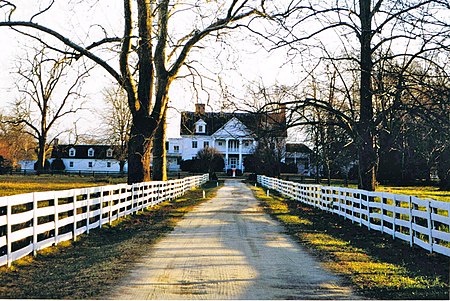Warner Hall

Warner Hall is a historic plantation in Gloucester County, Virginia, United States. Augustine Warner, progenitor of many prominent First Families of Virginia, and great-great-grandfather of President George Washington established the plantation in 1642 after receiving a royal land grant, and would serve in the House of Burgesses, as would many later owners. While Augustine Warner Jr. operated the plantation and served as speaker of the House of Burgesses, rebels associated with Bacon's Rebellion sacked and looted it, as well as made it their headquarters after they sacked Jamestown. Warner sought compensation for goods valued at £845, or the equivalent of what 40 slaves or servants would produce in a year, which led to litigation with fellow burgess William Byrd, whom Warner blamed for supporting Bacon but who portrayed himself as a fellow victim. Warner had no male heirs, although his daughter Mildred would become the grandmother of George Washington, and his daughter Elizabeth married John Lewis, who assumed the house and surrounding plantation, as well as served in the House of Burgesses, as did their descendants until circa 1820. The house burned in 1840, and the two surviving (and used) outbuildings were joined circa 1900 to become a Colonial Revival mansion. It is currently operated as a country inn. The cemetery on the property, which includes graves of the Warner and Lewis families, has been maintained by the Association for Preservation of Virginia Antiquities since 1903.The plantation was listed on the National Register of Historic Places in 1980.
Excerpt from the Wikipedia article Warner Hall (License: CC BY-SA 3.0, Authors, Images).Warner Hall
Warner Hall Road,
Geographical coordinates (GPS) Address Nearby Places Show on map
Geographical coordinates (GPS)
| Latitude | Longitude |
|---|---|
| N 37.34 ° | E -76.476666666667 ° |
Address
Warner Hall Road
23061
Virginia, United States
Open on Google Maps


